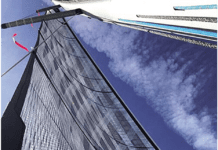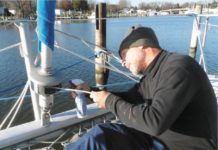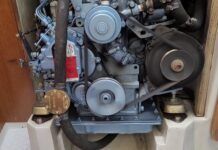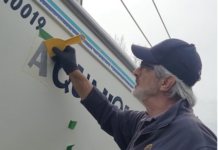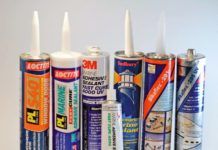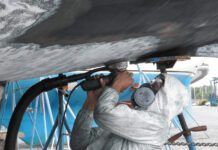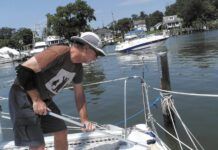How to Change Your Engine Mounts
It is always discomforting when you know, and actually feel, that something is not quite right. For a little while now, while navigating under...
Vinyl Boat Lettering DIY Application and Repair
One of the pleasures of boating, at least for me, is reading boat names! I enjoy the many humorous names and those that are...
The Scraper-only Approach to Bottom Paint Removal
Spring is just around the corner. For many sailors, especially those with boats on the hard, it’s good time to consider the advantages of...
Gonytia Hot Knife Proves its Mettle
A hot knife is a luxury item, but nothing is better for cutting and sealing synthetic rope and fabric. We find ourselves reaching for...
Mildew-resistant Caulks for Boats
Choosing a marine caulk for use above the waterline comes down to which product offers the best resistance to weathering, dirt, mildew, and ability...
Random Orbit Sanders for Bottom Paint Prep
More than a century has passed since Art Emmons, a visionary young engineer at the 15-year-old Porter Cable Company, launched a technology race in...
Deep Cleaning the Supremely Dirty Boat
One reason for my aversion to scrubbing is that a Corsair F-24 trimaran is a folding trimaran, making it a nightmare to clean. Comprised...
Protecting Against Boatyard Fire
The 1666 London Fire. The 1871 Chicago Fire. The 1906 San Francisco Fire. Common factors shared by all of these disasters were inadequate spacing...
Dodging the Marine Chandlery Trap
The marine environment is demanding, so sacrificing quality is often a mistake. But marine supply stores, and even online “discount” marine retailers can feel...
Bungee Lanyards Take the Shock Out of Tools Dropped from the Mast
Iput a nice dent in the deck several decades ago when I dropped a wrench from the masthead. It scared the crew too.
I haven’t...













